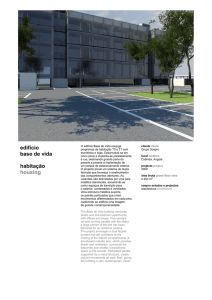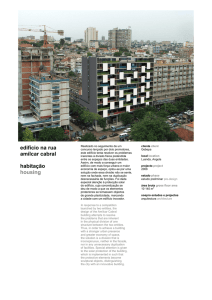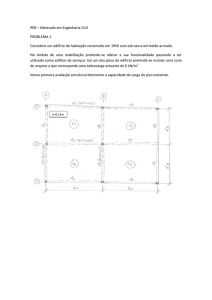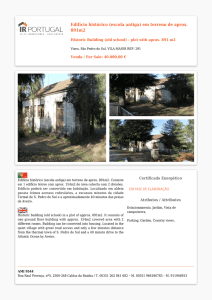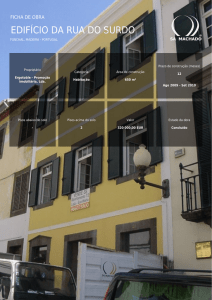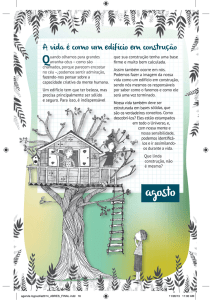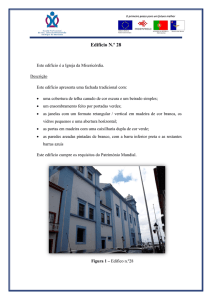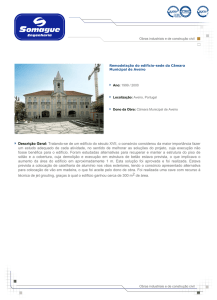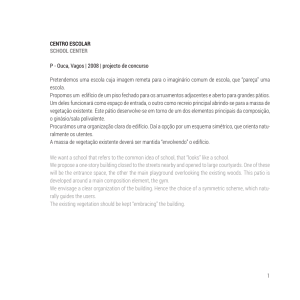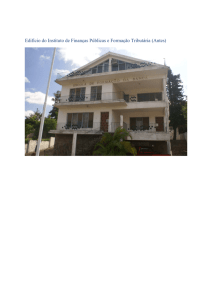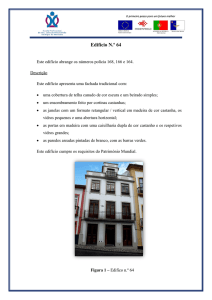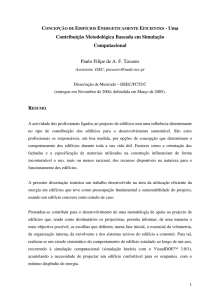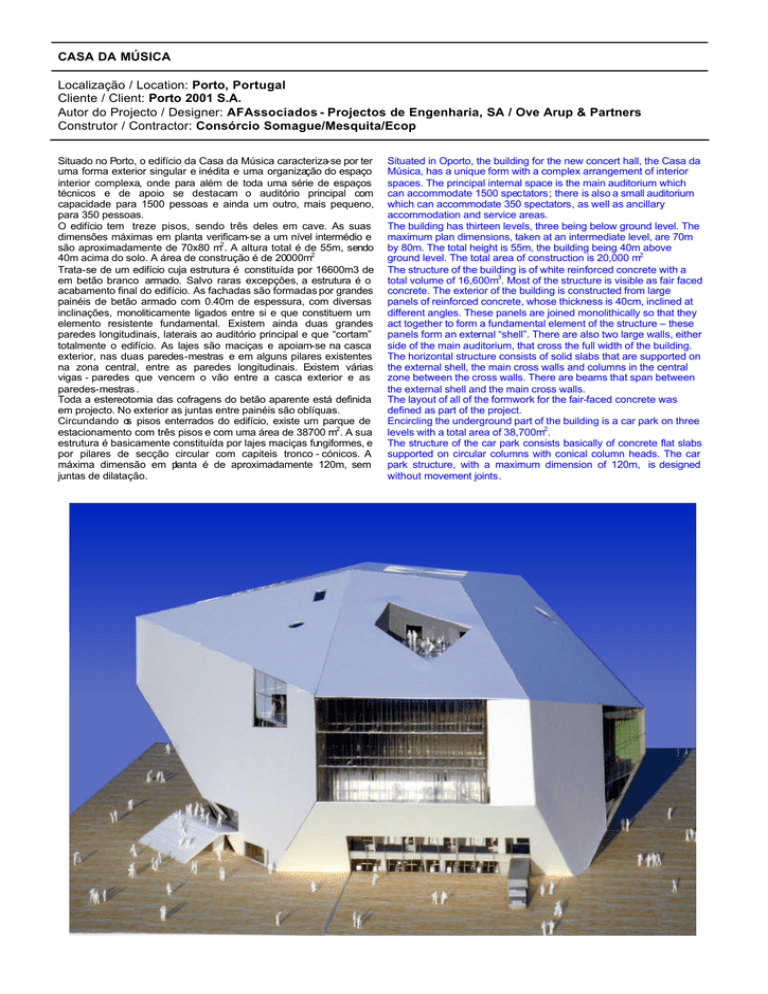
CASA DA MÚSICA
Localização / Location: Porto, Portugal
Cliente / Client: Porto 2001 S.A.
Autor do Projecto / Designer: AFAssociados - Projectos de Engenharia, SA / Ove Arup & Partners
Construtor / Contractor: Consórcio Somague/Mesquita/Ecop
Situado no Porto, o edifício da Casa da Música caracteriza-se por ter
uma forma exterior singular e inédita e uma organização do espaço
interior complexa, onde para além de toda uma série de espaços
técnicos e de apoio se destacam o auditório principal com
capacidade para 1500 pessoas e ainda um outro, mais pequeno,
para 350 pessoas.
O edifício tem treze pisos, sendo três deles em cave. As suas
dimensões máximas em planta verificam-se a um nível intermédio e
são aproximadamente de 70x80 m2. A altura total é de 55m, sendo
40m acima do solo. A área de construção é de 20000m2
Trata-se de um edifício cuja estrutura é constituída por 16600m3 de
em betão branco armado. Salvo raras excepções, a estrutura é o
acabamento final do edifício. As fachadas são formadas por grandes
painéis de betão armado com 0.40m de espessura, com diversas
inclinações, monoliticamente ligados entre si e que constituem um
elemento resistente fundamental. Existem ainda duas grandes
paredes longitudinais, laterais ao auditório principal e que “cortam”
totalmente o edifício. As lajes são maciças e apoiam-se na casca
exterior, nas duas paredes-mestras e em alguns pilares existentes
na zona central, entre as paredes longitudinais. Existem várias
vigas - paredes que vencem o vão entre a casca exterior e as
paredes-mestras .
Toda a estereotomia das cofragens do betão aparente está definida
em projecto. No exterior as juntas entre painéis são oblíquas.
Circundando os pisos enterrados do edifício, existe um parque de
estacionamento com três pisos e com uma área de 38700 m2. A sua
estrutura é basicamente constituída por lajes maciças fungiformes, e
por pilares de secção circular com capiteis tronco - cónicos. A
máxima dimensão em planta é de aproximadamente 120m, sem
juntas de dilatação.
Situated in Oporto, the building for the new concert hall, the Casa da
Música, has a unique form with a complex arrangement of interior
spaces. The principal internal space is the main auditorium which
can accommodate 1500 spectators; there is also a small auditorium
which can accommodate 350 spectators, as well as ancillary
accommodation and service areas.
The building has thirteen levels, three being below ground level. The
maximum plan dimensions, taken at an intermediate level, are 70m
by 80m. The total height is 55m, the building being 40m above
ground level. The total area of construction is 20,000 m2
The structure of the building is of white reinforced concrete with a
total volume of 16,600m3. Most of the structure is visible as fair faced
concrete. The exterior of the building is constructed from large
panels of reinforced concrete, whose thickness is 40cm, inclined at
different angles. These panels are joined monolithically so that they
act together to form a fundamental element of the structure – these
panels form an external “shell”. There are also two large walls, either
side of the main auditorium, that cross the full width of the building.
The horizontal structure consists of solid slabs that are supported on
the external shell, the main cross walls and columns in the central
zone between the cross walls. There are beams that span between
the external shell and the main cross walls.
The layout of all of the formwork for the fair-faced concrete was
defined as part of the project.
Encircling the underground part of the building is a car park on three
levels with a total area of 38,700m2.
The structure of the car park consists basically of concrete flat slabs
supported on circular columns with conical column heads. The car
park structure, with a maximum dimension of 120m, is designed
without movement joints.
A análise e o dimensionamento estrutural foram feitos recorrendo a
modelos tridimensionais de elementos finitos de casca delgada e
barra espacial. Foi dada especial relevo ao estudo dos estados
limites de utilização de modo a controlar a fendilhação do betão.
Da mesma forma, o faseamento construtivo foi estudado através de
modelos de cálculo tridimensionais.
Structural analysis and design was done by means of threedimensional model using thin shell and space bar finite elements.
Special care was taken to consider serviceability limit states in order
to control concrete cracking.
Likewise the construction sequence was studied using 3D analysis
models.

